Global Unicorn Summit

Global Unicorn Summit
Date : April 28, 2022
Organizer: CII
About the Event: Mr. Rahul Garg, Founder & CEO, Moglix recently shared his perspective on ‘Building Global Products & Services’ at CII Global Unicorn Summit. While laying emphasis on taking the B2B path towards building a business, he went on to add: ‘’When we built the operating system for both procurement & sales through our platform – it does require a different type of mindset along with the knowledge of adapting & building your organization with cultural nuances.” The panel comprised of Mr. Bhavin Pandya (CEO, Games24x7) and Mohit Dubey (Co-Founder & CEO, Chalo) and was moderated by Mr Vikas Agnihotri (Softbank Investment Advisers).
53rd Inflection Supply chain awards

53rd Inflection Supply chain awards
Date : April 21, 2022
Organizer: Alden Group
About the Event: Puneet Kumar, VP-Technology, Moglix spoke on ‘Digital First Procurement’ at the 53rd Inflection Supply Chain awards.
Propel Pitchfest 22

Propel Pitchfest 22
Date : April 20, 2022
Organizer: BML Munjal University
About the Event: Mr. Rahul Garg, Founder & CEO, Moglix recently shared his perspective on ‘Innovation and Startup’ at BML Munjal University’s Propel Pitchfest22. While laying emphasis on the need to innovate onself, he went on to add: ”World and technology is going to change around you so don’t think that something that you have done for 10 years is now your life or career path. You can keep on experimenting.” The discussion was facilitated by Prof. Davinder Singh, CEO, ACIC-BMU Foundation.
Global Stainless Steel Expo

Global Stainless Steel Expo
Date : April 14, 2022
Organizer: GSSE
About the Event: Mr. Mohit Gulyani, Senior Director, Moglix sharing his perspective on ‘The Role of Digital in Enabling Business Transformation for MSMEs’ at the Global Stainless Steel Expo. While laying emphasis on the role of the MSME business, he went on to add, ”In our ambition to grow into a 5 trillion-dollar economy, digitization of India’s MSME sector will play a pivotal role. Moglix is digitizing India’s manufacturing MSMEs in procuring, efficiently manufacturing, selling, and financing their products.” The panel also comprises of – Mr. Akash Gupta (Head Business Development, Udaan Capital), Mr. Narendra Kamath (Group Business Head, Supply Chain and Asset Finance, Tata Group) and will be moderated by Mr. Jitendra Agarwal (Founder and CEO, Stainless Bazaar).
Moglix Announces Executive Elevations, Strengthens Leadership As It Enters Next Phase Of Growth
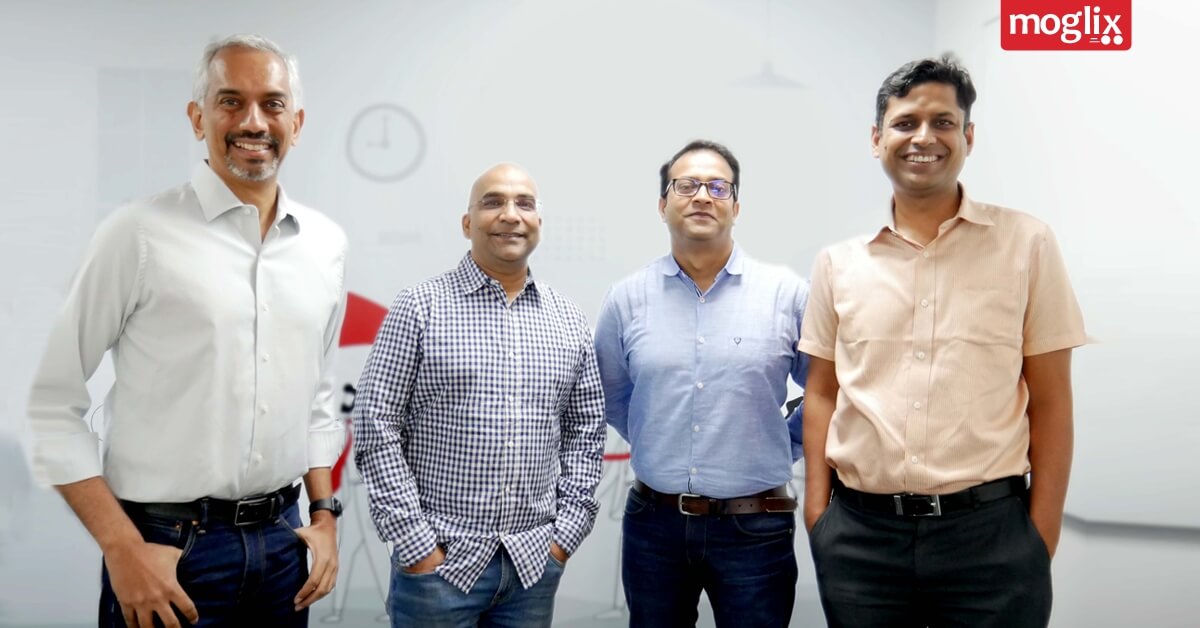
Moglix Announces Executive Elevations, Strengthens Leadership As It Enters Next Phase Of Growth
One of Asia’s largest B2B Commerce companies, Moglix, has elevated three of its senior leaders: Mukund Vasudevan, Partha S. Dash, and Sandeep Goel as the new Managing Directors of the company. The announcement comes as a boost to Moglix’s senior leadership as it is poised for global expansion and growth.
“Moglix is in an exciting phase of growth as we expand our operations globally and deepen our expertise, reach, and impact. It’s great to have three very strong leaders play a larger role in fulfilling our vision of creating tremendous value for the customer as we scale. They are not only experienced, but extremely passionate leaders and their leadership is sure to steer us continuously in the right direction.”
Rahul Garg, Founder & CEO, Moglix added
Mukund Vasudevan joined Moglix in July 2021 to lead strategic partnerships and will now be leading the Enterprise Solutions business vertical, working with our enterprise customers to transform their supply chain.
Partha S. Dash joined Moglix in 2015 and has been a part of the seed to scale journey for the MRO and Packaging verticals. Going forward, he will focus on growing the new business verticals and geographies.
Sandeep Goel joined Moglix in 2018 to lead product strategy and scale the human capital function, building processes and culture as the organization scaled from 300 to 1400 employees during a global pandemic. In his new role, Sandeep will lead strategy and operations.
With end to end supply chain operations from strategic sourcing to financing, Moglix is a global digital supply chain solutions company
How Rewards and Recognition Can Reap Rich Dividends for Organizations in the New Normal
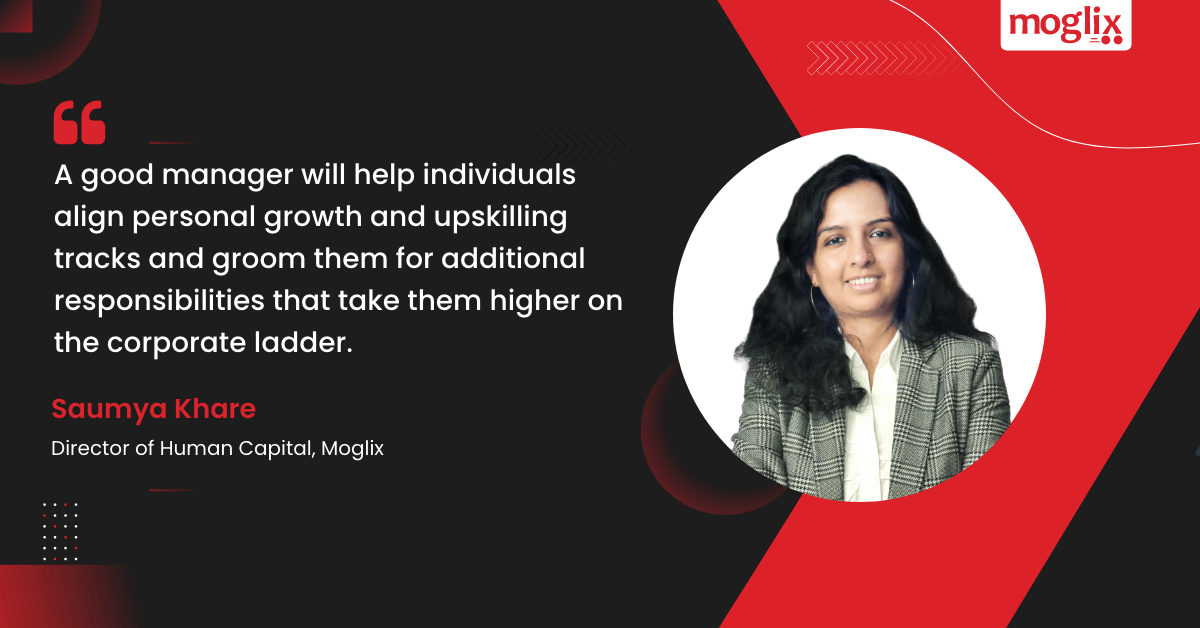
How Rewards and Recognition Can Reap Rich Dividends for Organizations in the New Normal
It is clear that the future of work is hybrid. If 2021 was dubbed the ‘Year of the Great Resignation.’ 2022 is turning out to be the ‘Year of the Great Return.’ The Randstad Work Monitor Survey of 2021 highlights that 85% of employees expect some form of flexible work arrangement in the post-pandemic world.
As the nature of work changes, so must the measure of employee success and engagement. We must examine how the landscape of expectations has shifted for employees in the past two years.
- Transparency and stability: Transparency creates a positive employer brand and adds credibility to every management decision.
- Performance measurement: We all conduct exit interviews. Maybe it is the right time to prioritize ‘stay interviews.’ Understanding what is working for your best-performing employees is the easiest way to amplify the positive aspects of work.
- Balance in Rewards and Recognition: A recent Glassdoor survey showed that 53% of employees felt they would stay with the company longer if they received more appreciation from their bosses.
- Alignment to organizational purpose: Organizations need to understand that millennials and Gen-Z workforce prioritize culture, values and a strong sense of purpose more than earlier generations.
So how can we create a more impactful rewards and recognition program? Here are some ways :
- De-linking R&R and feedback: Feedback goes a long way in helping individuals and teams course-correct, but encouragement does so much more.
- Balance of rewards: Letters from the CEO, recognition in front of their peers and more frequent recognition are equally important.
- One size doesn’t fit all: Recognizing the efforts of your best-performing employees is vital to the retention and their ability to transform into the next generation of leaders.
- Corporate brand and personal brand: A good manager will help individuals align personal growth and upskilling tracks and groom them for additional responsibilities that take them higher on the corporate ladder.
Gartner research indicates that a well-designed Rewards and Recognition Program can increase average employee performance, productivity and efficiency parameters by 11%.
How Indian CPOs Can Overhaul Procurement: Learning From the Best

How Indian CPOs Can Overhaul Procurement: Learning From the Best
An inefficient supply chain is a symptom that a manufacturer is far from its peak operational strength. It can bleed money, cost time, and labor.
So what’s the remedy for this? CPOs on a procurement overhaul mission can get the best possible results by focusing on five key action points.
- Using Clean Procurement Data
Securing clean procurement data is vital to revamping any procurement process. Unclean procurement data is far from helpful. A CPO’s best bet in this regard is to have access to native first-hand data.
A leading F&B company that runs over 30,000 restaurants in India used procurement data to significant effect. The food supply chain enabler identified order delivery mismatches and then rigorously supervised the metadata to identify patterns of flawed deliveries. A comprehensive strategy was then devised to cut it down.
- Catalog-Based Buying
This involves the procurement of raw materials based on a catalog that serves as the single source of truth for the CPO. The catalog based buying solution is integrated into the ERP system that facilitates the ordering process. After mutual consideration between the supplier and the CPO, the listed prices have been agreed upon.
An EPC company which is a market leader in the infrastructure vertical implemented this. which shortened the time between the PR to PO cycle by 80%.
- Vendor Consolidation
A fragmented list of vendors can be a liability. Complete vertical integration is an ambitious goal to pursue, but not all have the cash flow or bandwidth to do it. In such a scenario, narrowing down the vendors’ list to a few reliable performers is crucial.
One of India’s leading tire manufacturers deployed the vendor consolidation strategy as a cost-saving measure. Procurement overheads were down by 5%, while the total cost of ownership was reduced by 20%.
- Vendor Managed Inventory
This refers to a supplier allowing the manufacturing company to take over its inventory management. If executed precisely, the retailing company can reduce its procurement costs while the supplier company can win terms of elevated sales.
One of India’s premier non-ferrous metal manufacturers reduced its turnaround time by almost 30% by adopting this practice.
- Sharing Data With The Vendor
Sharing procurement data with suppliers can turn out to be a symbiotic arrangement. It can help weed out delays and slippages that affect the manufacturing process.
A robotics firm decided to share procurement data with its supplier to refine its manufacturing process. The result was an impressive scaling up of the manufacturing of ventilators to an expedited 90 days. Consequently, the product was rolled out much before its release date.
CPOs can help script a turnaround by focusing on negligent processes that hamstring operational efficiency. Small yet strategic changes in the supply chain can yield huge dividends.
Mumbai Metro: Reimagining the Daily Commute of Mumbaikars with Infra
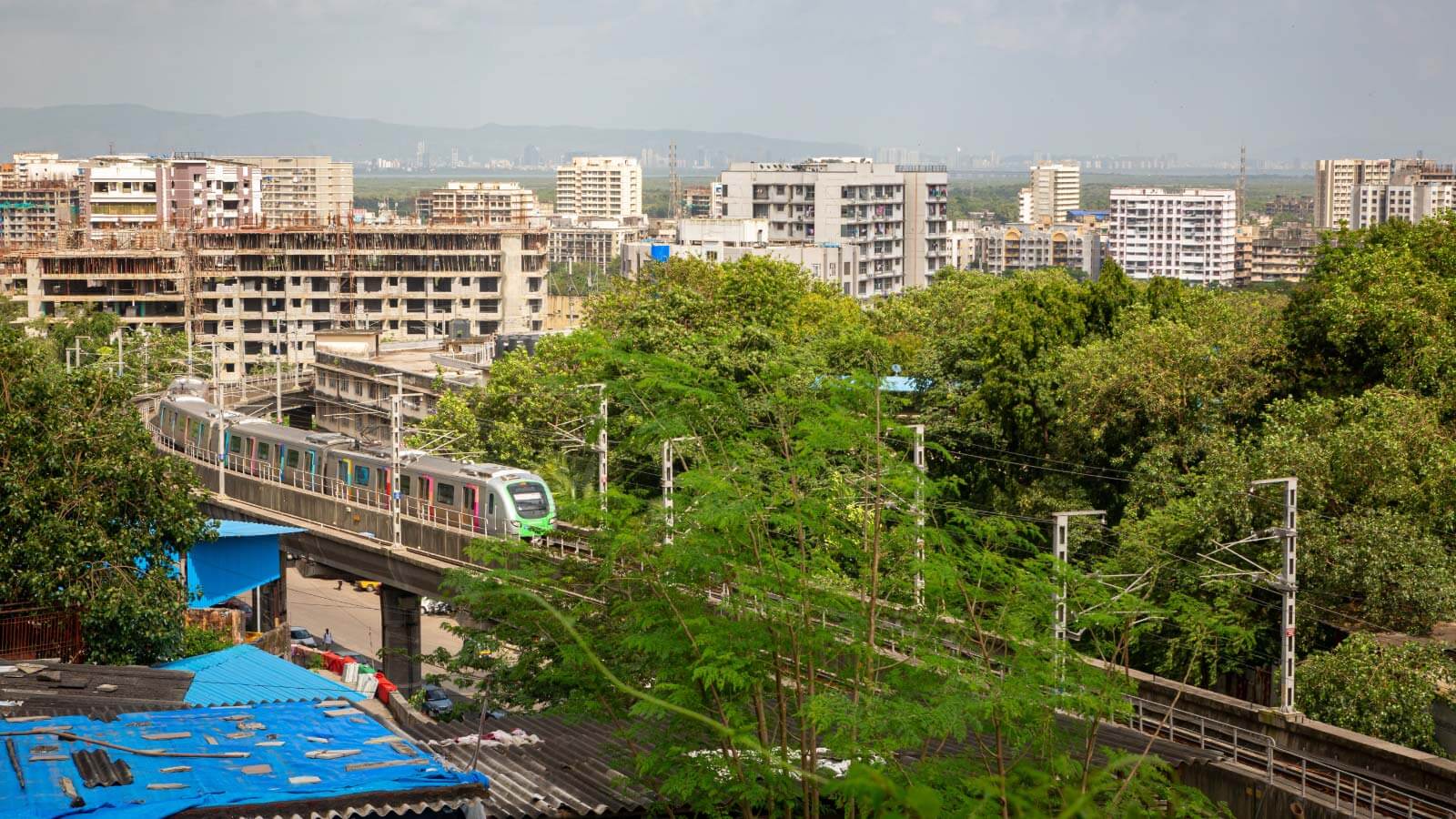
Mumbai Metro: Reimagining the Daily Commute of Mumbaikars with Infra
A rapid transit (MRT) system, the Mumbai Metro is designed to curb traffic congestion in the city and supplement the already overcrowded Mumbai Suburban Railway network. Currently, Mumbai Metro consists of one operational line, i.e. (Line 1- From Versova to Ghatkopar), and four lines under varying stages of construction.
Salvation From the Daily Hustle and Bustle
Carrying over 5000 passengers daily, today’s suburban trains are overflowing against their design capacity of 1750, leading to a rise in noise and dust pollution. The upcoming metro lines will reduce this load by nearly 50%, sparing commuters the chaos and bringing in more comfort.
A Phenomenal Addition to Mumbai’s Urban Infrastructure
To combat the city’s linear geometry that makes it difficult to expand horizontally, a Metro along the Trans Harbor Link of Mumbai (MTHL) to connect Sewri with Nhava Sheva had been proposed.
This developmental project would reduce the current travel time of 120 minutes to 20 making it the second-longest sea link in the world in the pipeline.
The 21.80 km long MTHL project is expected to be finished by September 2023 as around 50 percent of work has been completed so far. The 6-lane MTHL project will open doors of direct access to Navi Mumbai, Navi Mumbai International Airport, Mumbai-Pune Expressway, and further towards Southern India.
Across Mumbai’s Harbor, the MTHL will pass over Sewri mudflats, Pir Pau Jetty, and Thane Creek channels; while on the Sewri-end, a three-level interchange will connect the Sewri-Worli Connector and Eastern Freeway. The Navi Mumbai’s bridge has an interchange each at Shivaji Nagar and Chirle.
This multimodal transport system upon completion will be used by approximately 39,000 vehicles diversifying the load and releasing the strain on the existing infrastructure.
In the post-COVID19 era, the mandate to reimagine mobility projects like MTHL and Mumbai Metro will achieve more significance because of the synergy between the Rail and the Public Transport.
The Ramification of Mumbai Metro on Mumbaikars’ Quality of Living:
The increase in traffic congestion makes it incredibly challenging for freight and delivery service operators to maintain reliable schedules, affecting supply chain business involving public and private sector operators.
From the perspective of both the residents of the city, shippers and carriers, there are day-to-day cost implications, risks, and returns associated with traffic congestion leading to ineffective supply chain management.
A study dubbed that by 2031, Mumbai Metro will cut congestion from 95% to 9% in MMR. The upcoming projects are all focused on enhancing the comfort and security of Mumbaikars at a minimal cost.
De-congested roads lead to improved quality of living, and stakeholders in the supply chain can primarily benefit from it. A robust supply chain is essential for smooth and on-time project delivery.
A Digital Procurement Solutions Approach for New-Age Contractors
As one can imagine, an infrastrutcure project of many moving parts needs intense coordination in procurement and the supply chain of raw materials, consumables, and made-to-order manufacturing solutions.
A single missing link in the chain results in labor inefficiency, time delays, and a bloated budget. Some key takeaways for EPC companies, contractors, and suppliers to usher in a transformation in crucial infrastructure projects:
- Adopt a flexible, reliable, and digital procurement solution to reduce the PR to PO cycle. A slight reduction in the time cycle can have a lasting impact on costs.
- Digital procurement enables end-to-end flexibility and transparency of the procurement chain, involving many materials like TMT bars, cement plates, and ready mix concrete.
To know more about how an EPC solution can work for your construction or infrastructure project, reach out to Moglix. Explore the best raw material procurement solutions for infrastructure companies. Click here to know more: https://business.moglix.com/our-solutions/infrastructure
Reimagining Customer Experience in Custom Manufacturing
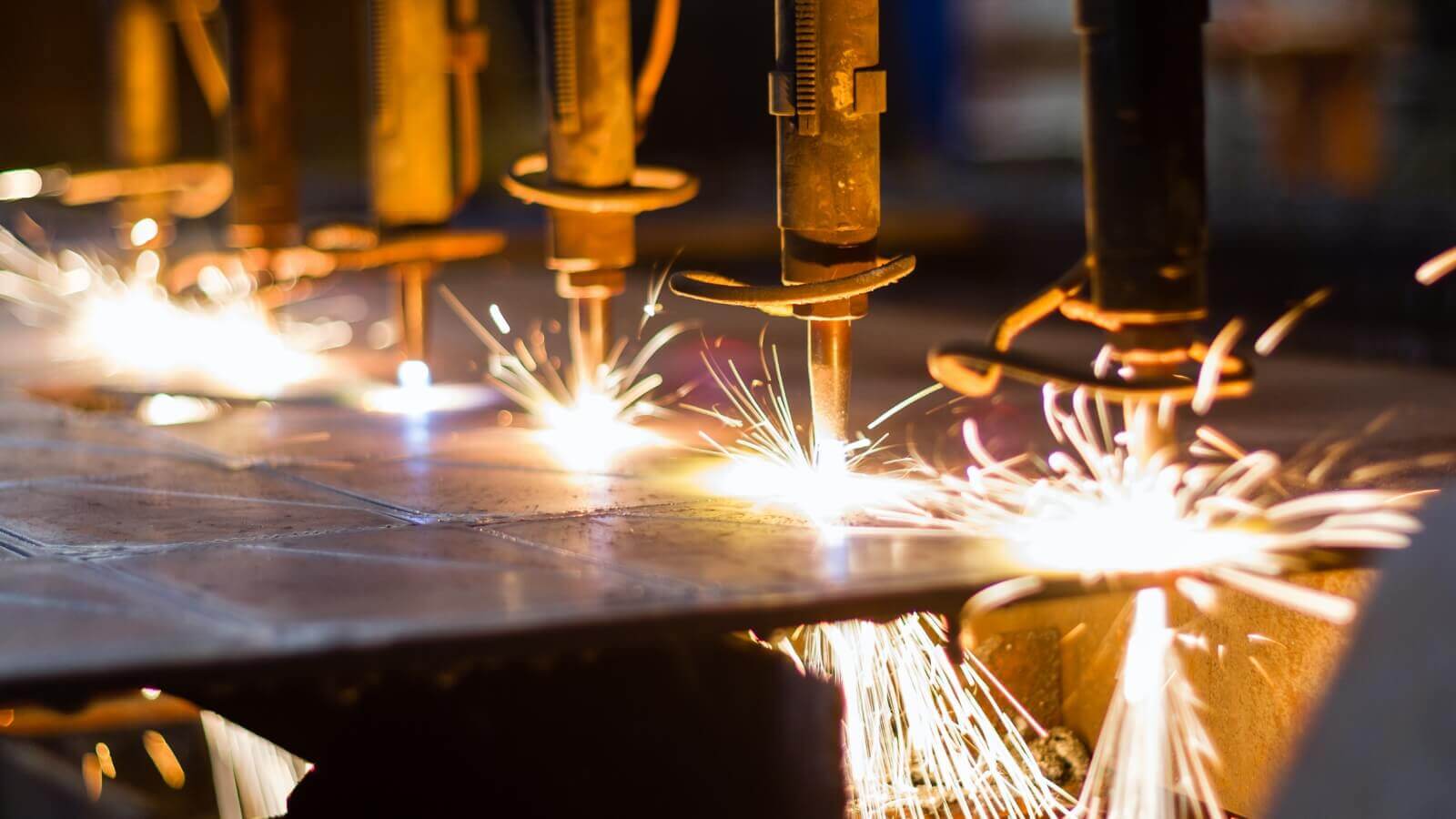
Reimagining Customer Experience in Custom Manufacturing
When a butterfly flaps its wings on one side of the world, its ripple effect is felt on the other side—a simple explanation of the complex Chaos Theory, which purports that a small change can have far-reaching implications. After the pandemic, the industry returned to normal, and the rush to build back better meant that infrastructure project completion was a high priority.
Where Does the Infrastructure Boom Come Back to EPC Companies?
For EPC companies in India, the last month has been a roller coaster ride. India’s largest iron ore producer, the state-controlled National Mineral Development Corporation (NMDC), raised prices for a second consecutive month. Cement producers have also had to raise prices due to the disruption in coal and pet coke supply due to the war escalation in Eastern Europe.
What is the Balance Sheet Impact on EPC Companies?
The implications of this unpredictability have immense top-line effects for EPC companies. For example, short delays of even one week in the execution of infrastructure projects in India lead to a 0.01% hike in costs. Over a year, this can lead to 10-12% liquidated damage charges for the EPC contractor.
What Does This Have to Do with Customer Experience in Custom Manufacturing?
Today, a high-quality customer experience is all about outcomes. For an EPC company, unpredictability in material prices, logistics delays, and manual vendor management create a less than ideal user experience. This applies equally to their teams and the customer, usually a public entity.
How Do Moglix Digital Project Management Solutions for Manufacturing Make a Difference?
Global engineering, procurement, and construction companies bank on our digital project solution to transform their custom manufacturing. We provide a wide range of solutions that bring large amounts of spend under control by streamlining your supply chain operations.
The Moglix manufacturing-as-a-service solution is built to enable near real-time visibility into the order-to-delivery of custom manufacturing requirements. Our digital project management platform allows EPC contractors to stay in control of their projects’ custom manufacturing requirements. Our digital track and trace capabilities bring tremendous benefits in planning, price standardization, and collaboration on a single platform. Add an extended network of 40+ multimodal logistics partners and 38+ warehouses which results in seamless collaboration across all stakeholders and keeps project budget overshoot down to the minimum.
The Future of Customer Experience in Custom Manufacturing
Extended features like track and trace, vendor management, and data analytics to predict price fluctuations, supply chain bottlenecks, and material shortfall are ushering the EPC ecosystem into a modern age of transparency and customer-centricity. Many EPC contractors and large infrastructure project companies that are building India’s National Infrastructure Pipeline are already reaping the benefits of our global supply chain expertise combined with our dependable manufacturing network. An efficient and profitable end-to-end project management experience is the key to EPC companies delivering a superior customer experience. It is the future of custom manufacturing and it is unfolding now.
Moglix Aims to Give a Digital Boost to Big-Ticket Infra Projects
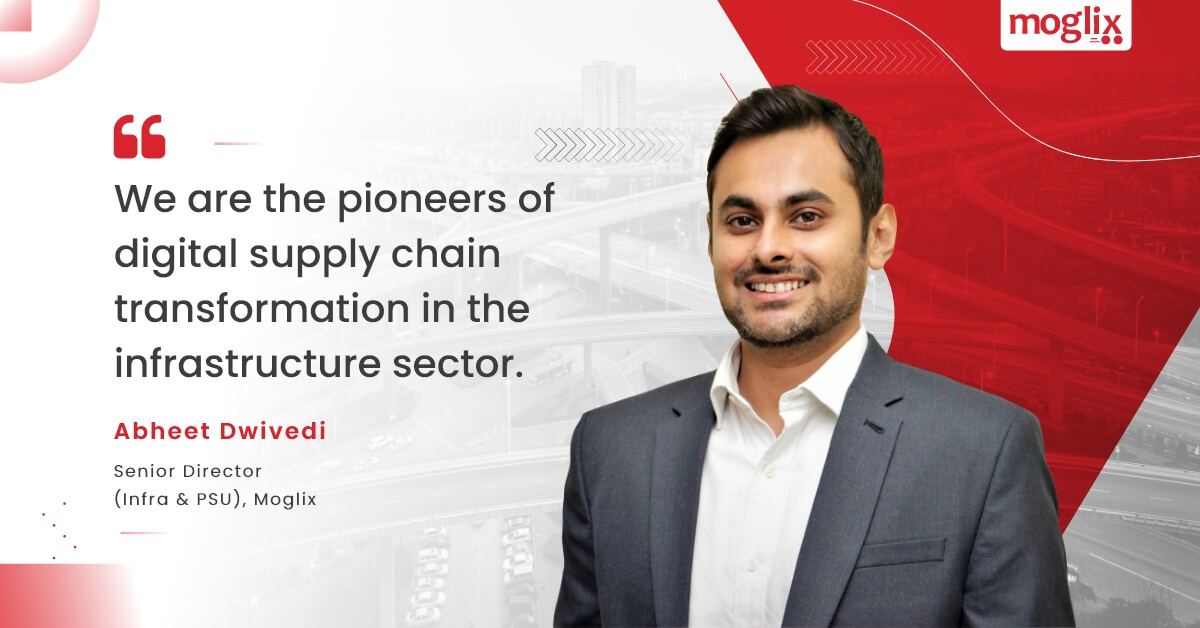
Moglix Aims to Give a Digital Boost to Big-Ticket Infra Projects
On the opportunities from big-ticket projects and tier-II, tier-III transformations
Year 2022 will be a complete game-changer in the infrastructure sector. There will be a plethora of mega projects in the National Infrastructure Pipeline. The planned expenditure on the National Infrastructure Pipeline over the next five years stands at USD 1.5 trillion. The 35 percent CAPEX spending hike is historic. With the PM Gati Shakti Master Plan, both the financial and digital project monitoring frameworks will be in place, pushing immaculate planning and agile execution.
Role of your platform towards bringing in the desired change for infra space
Large EPC companies in the infrastructure sector that work on turnkey projects face a significant pain point in calibrating actual project costs to the estimated project costs. They get orders on a fixed-price model. The delays in the execution phase lead to fluctuations in sourcing: both costs and availability along with the offline approval workflow gap. This is where technology integration in the infra supply chain space can help.
Moglix helps large EPC companies increase their adoption of a digital supply chain solution to make project management seamless and efficient. Further, the digital procurement solution offers intuitive insights into hidden pockets of efficiency that have enabled the EPC company to consolidate its supplier base.
Goals set for the year 2022
Moglix’s goal for the year 2022 in the infrastructure sector is to partner with EPC companies that are building India by enabling their supply chain through four levers. These levers include (i) thrust on expansion into core construction material categories, (ii) fostering innovation in new material development, (iii) digital procurement transformation, and (iv) promoting the adoption of sustainable construction materials, processes, and practices.
